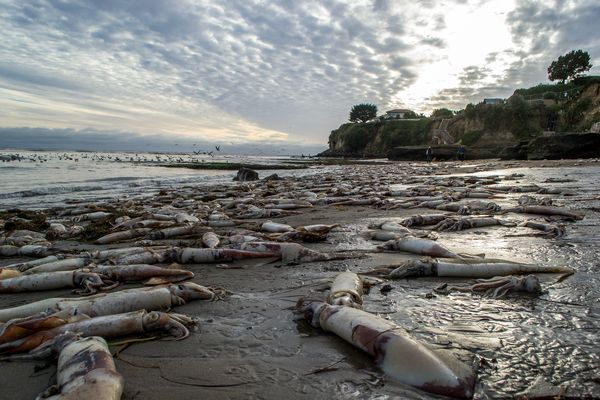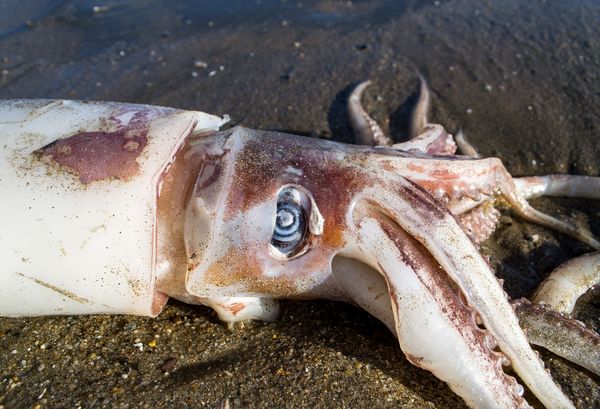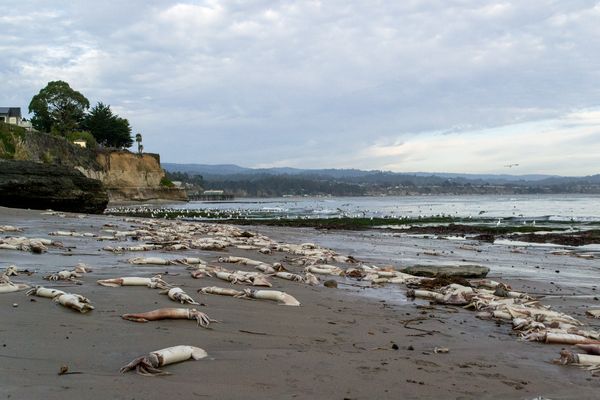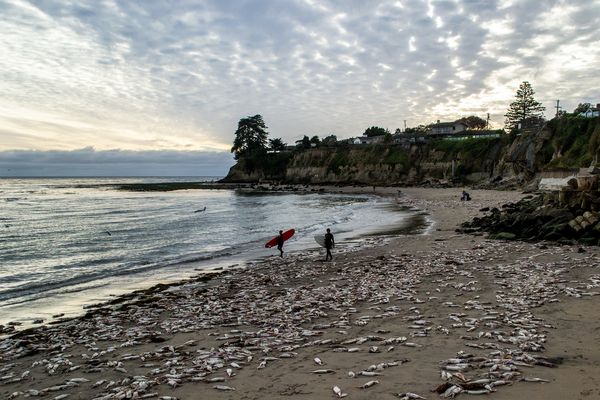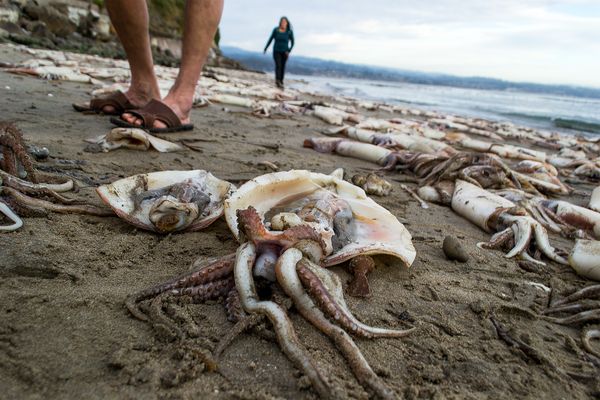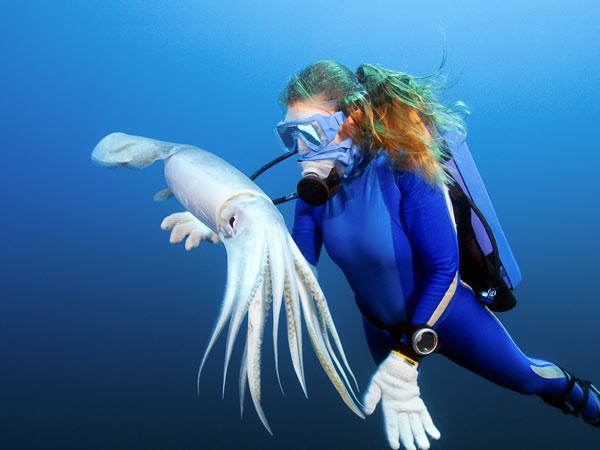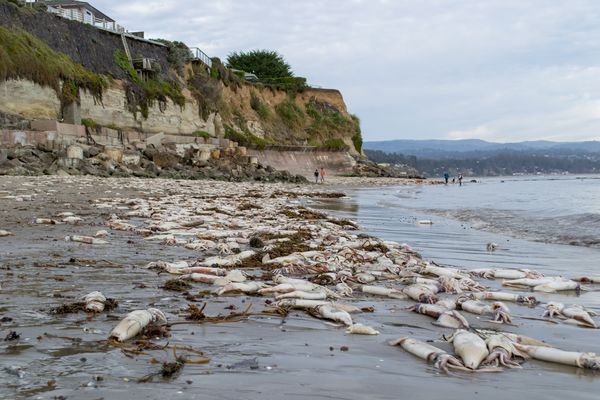Humboldt Squid Have a Bad Day at the Beach
Gruesome Gathering
While looking for a whale fossil exposed by a very low tide on a secluded Santa Cruz, California, beach in early December, photographer Chris Elmenhurst discovered a gruesome scene—and a scientific mystery. Hundreds of dead Humboldt squid (Dosidicus gigas), also known as jumbo squid, had washed ashore on Capitola beach (pictured). Later reports showed similar scenes had played out from Santa Cruz south to Aptos and Pacific Grove in central California, culminating in squid casualties estimated in the thousands.
Jumbo Mystery
Why these jumbo squid—capable of growing up to 5 feet (1.5 meters) in length—end up beaching en masse is a bit of a mystery in the scientific community. “These types of things do happen now and then for various reasons which are not well understood,” said fish biologist John Field, with the National Oceanic and Atmospheric Administration (NOAA).
Deadly Hunger
Diverse causes for this macabre phenomenon (pictured above) include expanding squid ranges due to climate change and warming waters, or toxic algae blooms that disorient the squid so they lose their bearings.
Some scientists think it has a more direct cause. It’s possible the squid were following prey and couldn’t cope with being crowded into increasingly shallow waters on a falling tide, saidHenk-Jan Hoving, a researcher with the Monterey Bay Aquarium Research Institute (MBARI) in California.
Squidy Obstacles
“Strandings have been taking place with increased frequency along the west coast over the past ten years,” noted NOAA’s Field, “as this population of squid seems to be expanding its range—likely a consequence of climate change—and can be very abundant at times.”
Humboldt squid are typically found in warmer waters farther south in theGulf of California (map) and off the coast ofPeru. “[But] we find them up north here during warmer water time periods,” said ocean sciences researcherKenneth Bruland with the University of California, Santa Cruz (UCSC).
Coastal upwelling—when winds blowing south drive ocean circulation to bring cold, nutrient-rich waters up from the deep—ceases during the fall and winter and warmer water is found closer to shore. Bruland noted that climate change, and the resulting areas of low oxygen, “could be a major factor” in drawing jumbo squid north.
Incredible Ability
But this is not a universally accepted view. “I do not think this has anything to do with global warming” or changes in oxygen levels, saidFrancisco Chavez, a biological oceanographer with MBARI. Chavez’s colleague Hoving agrees. He points to the incredible ability of Humboldt squid to thrive in low oxygen environments that most other organisms tend to avoid. Hoving also described the invertebrate as an “incredibly agile predator” that would be unlikely to become trapped without cause, especially in such large numbers.
Mass Poisoning?
Harmful algal blooms are yet another possible cause for mass beaching events. Certain species leak toxins, such as domoic acid, into the water that can incapacitate local wildlife. Some scientists surmise that these blooms could play a direct role by rendering squid unable to discern direction.
This disorientation could cause a mass beaching, but the evidence is as yet inconclusive. “While it’s possible that the squid were exposed to a toxin, its reasonably unlikely,” saidRaphe Kudela, a phytoplankton ecologist at UCSC. “My lab monitors algae and toxins weekly from the Santa Cruz Municipal Wharf, and there has generally been very little to no toxin for the last month or so, and very few potentially toxic algae.”
Final Resting Place
There are no clear answers for the cause of such a gruesome day at the beach. The only certainty is the feast it provided for seagulls,sea lions, and other coastal predators that have happily carried out the beach cleanup effort.
